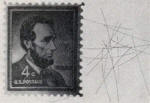
What do you think of the USAF's plan to deploy a band of millions of tiny dipole
antennas into orbit around Earth for communications support? Because over-the-horizon
(OTH) radio communications rely on the upper atmosphere being conductive to reflect
radio waves, it is essential that there always be something for bending signals
back to Earth rather than allowing them to escape into space. The ionosphere
has many identified regions that do a good job of reflecting signals of certain
wavelengths during particular times of day and under special atmospheric conditions
cause by solar activity. There are times when reliable OTH communications are not
possible because of severe
coronal mass ejections
(CMEs), high meteoric activity, and even terrestrial events like major volcanic
eruptions. Even predictable variation in ionosphere characteristics like the diurnal
blending of the F1 and F2 layers into a single F layer complicates emergency and
strategic communications planning that is vital to national defense.
 In
order to mitigate the risk, the U.S. Air Force decided to launch payloads consisting
of millions - eventually even billions - of 3/4-inch-long wires would encircle the
planet in a flat ring shape to act as half-wave reflector dipoles at 8 GHz.
Project West Ford (aka Project Needles) was born. Astronomers opposed the project
immediately because as envisioned the ring would interfere with both optical and
radio observations. Their objections were duly noted and filed for later reference.
To make a long story short, the first launch failed to properly deploy the wires,
but the second was successful and served its intended purpose. While not technically
in Low Earth Orbit (LEO) at 2,100 miles altitude, the wires' orbits did eventually
degrade and the particles burned up in the atmosphere during reentry (nothing spectacular). In
order to mitigate the risk, the U.S. Air Force decided to launch payloads consisting
of millions - eventually even billions - of 3/4-inch-long wires would encircle the
planet in a flat ring shape to act as half-wave reflector dipoles at 8 GHz.
Project West Ford (aka Project Needles) was born. Astronomers opposed the project
immediately because as envisioned the ring would interfere with both optical and
radio observations. Their objections were duly noted and filed for later reference.
To make a long story short, the first launch failed to properly deploy the wires,
but the second was successful and served its intended purpose. While not technically
in Low Earth Orbit (LEO) at 2,100 miles altitude, the wires' orbits did eventually
degrade and the particles burned up in the atmosphere during reentry (nothing spectacular).
The copper wires were encased in a naphthalene gel that was supposed to evaporate
in the vacuum of space, allowing the needles to disperse into a thin cloud (like
Saturn's rings). Unfortunately, a chemical reaction between the naphthalene and
copper metal-to-metal contact may have caused clumps of wires to form, thereby reducing
the effective area of the reflective ring. In 2001, the European Space Agency (ESA)
published a report titled "Modeling
of Copper Needle Clusters rom the West Ford Dipole Experiment" postulating the
possibility that many are still orbiting the planet, and indeed, North American
Aerospace Defense Command (NORAD) still tracks objects believed to be related to
Project West Ford.
While Project West Ford did get off the ground literally, it never did figuratively.
Some people believe the USAF cancelled the program because of the bad press it received
worldwide. Headlines like "U.S.A. Dirties Space" in the USSR's newspaper Pravda,
and a major story in the
Harvard Crimson were common. Oh, this all happened in the early
1960s, when artificial communications satellites began populating our sky, so the
metal wires were no longer deemed necessary. The rest, as it is said, is history.
What's old is new again, though. In 2002, at the beginning of the megabuck Global
Warming (all hail) industry, a trio of scientists published a paper titled, "Earth Rings
for Planetary Environment Control." In it they proposed deploying billions of
tiny metallic reflectors into space to prevent the sun's rays from reaching Earth.
A side benefit of facilitating global communications was mentioned (pages 8 and
13). Fortunately, we are still not blanketed by a layer of metal, but let the right
politician get paid enough money and it will eventually get done.
Thanks to RF Cafe visitor Joe B. for sending me this link to "The Forgotten
Cold War Plan That Put a Ring of Copper Around the Earth" on the Wired website.
It is definitely worth reading.
"Project
West Ford" by NASA
"Project Needles" aka "Project
West Ford" history by NASA
Posted August 17, 2013
|




























